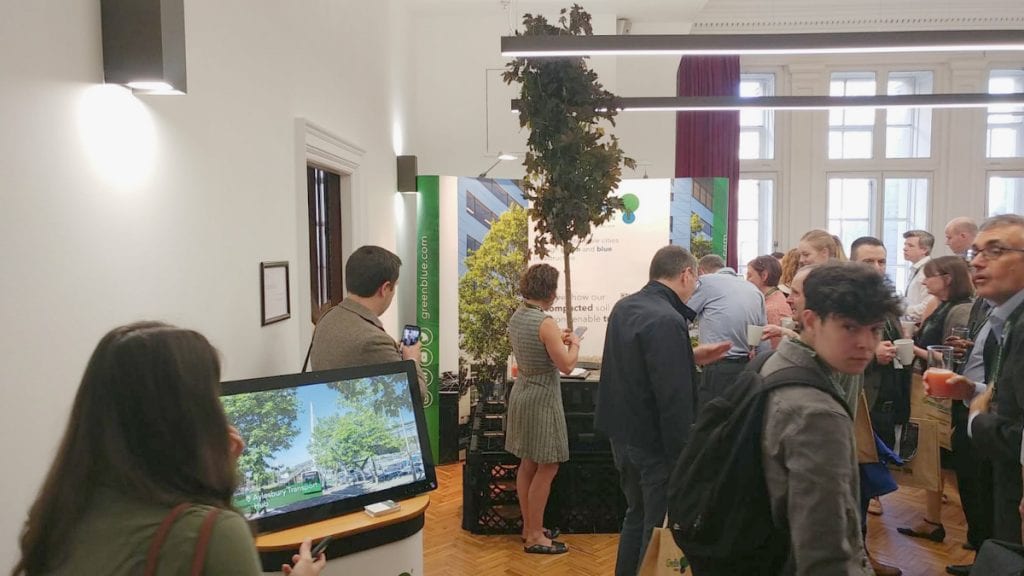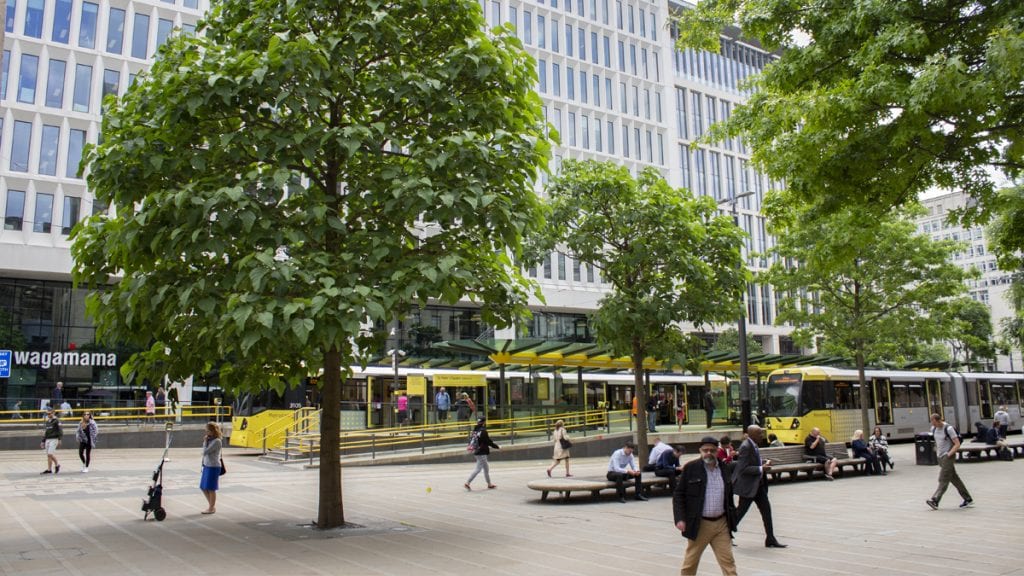In the fourth of the 2019 roadshows GBU has undertaken, having visited Glasgow, Leeds and Cambridge, the team arrived in Manchester. We have had a long and robust relationship with City of Trees and it was timely that we collaborated to bring together speakers on the topic of SUDS in the City. Making the explicit connection between the role of trees and sustainable urban drainage and how they are often overlooked both in terms of policy and design. With this in mind, the objective of the roadshow was to bring together public and private sector stakeholders to share ideas relating to the delivery of SUDS in the GMCA area.

Peter Stringer of City of Trees set the context, focusing on Manchester’s ambitions to increase canopy cover and their green infrastructure provision and the role of urban trees in delivering the multiplicity of co-benefits across the city. Dr David Hackett provided a fascinating contribution to proceedings, not only focusing on street level interventions but looking closely at the role of green and blue roofs and the designs and technologies that will ensure SuDS can be embedded at all levels of the cityscape. His emphasis on roofscapes being ‘wet and wild’ was opportune in a policy climate of increasing focus on biodiversity net gain.
Charlotte Markey provided a detailed overview of the use of engineered SUDS tree pit systems and the work GBU have been doing across Europe and their research and innovation alongside the University of Sheffield to deliver tree pit systems that can be used in highways schemes and as part of inner city retrofit raingarden projects.

Zorica Tudorovic from Atkins delivered a real call to action, to reappraise our view of the urban catchment and the approaches we currently utilise to deal with water in and around the city. Her talk dovetailed well with Charlotte’s talk as both emphasised the need for technological approaches that can be tested and modified alongside highways and typical street scenes that command the buy in of a variety of stakeholders. She gave an interesting insight into the use of permeable paving and the design approaches that have proven to be incredibly successful across the London Borough of Hammersmith and Fulham.
Bryan Cosgrove, City of Trees gave a welcome intervention that highlighted the need for the intelligent use of spatial data when considering the integration of green and blue infrastructure and this was followed by the GMCA perspective and the policy context that underpins the green infrastructure and SUDS agenda at a combined authority level. Mark Turner’s contribution encourages us to think about the importance of the drivers and the power of policy to ensure that vision can be translated into implementation.

It was vitally important that attendees had the opportunity to hear from the team at United Utilities. Without the buy in and the vision of utilities companies across the country and their investment in resilience we could not deliver the innovations necessary to increase the SUDS components available to designers for delivery in the urban environment. Charlotte was making this point when she talked about the integration of soil cells and services/utilities under the paved surface and the proactive work GBU have done with a wide range of utilities companies including Thames, Anglian and Welsh Water. The cost savings of the tree pit solutions in Greener Grangetown Cardiff were highlighted where reduction in water entering the Welsh Water network through the use of SUDs tree pits is saving in excess of 1m per annum.

The team at Bruntwood with their chosen topic of viability and the business case for SUDS constituted a necessary aspect of our holistic approach to the SUDs agenda. Amanda Skelton highlighted the need for investment in SUDS and provided an overview of the IGNITION project – looking at how we can develop innovative financing mechanisms for supporting a pipeline of SUDS and other GI projects. We cannot merely espouse the benefits of systems and approaches but we have to foster an environment of collaboration and to ensure that we understand the need to consider viability and to incentivise developers and land owners to consider a broad palette, a wider suite of SUDs solutions which are part of an intelligent business case for the long term.
In conclusion, the quality and variety of speakers and the diversity of disciplines amongst attendees made for one of the most engaging and lively atmospheres for a conference of this nature and the oscillation between the national the local and specific, the presentations highlighted, gave a rounded overview of what is being done well and the challenges that still lie ahead.
